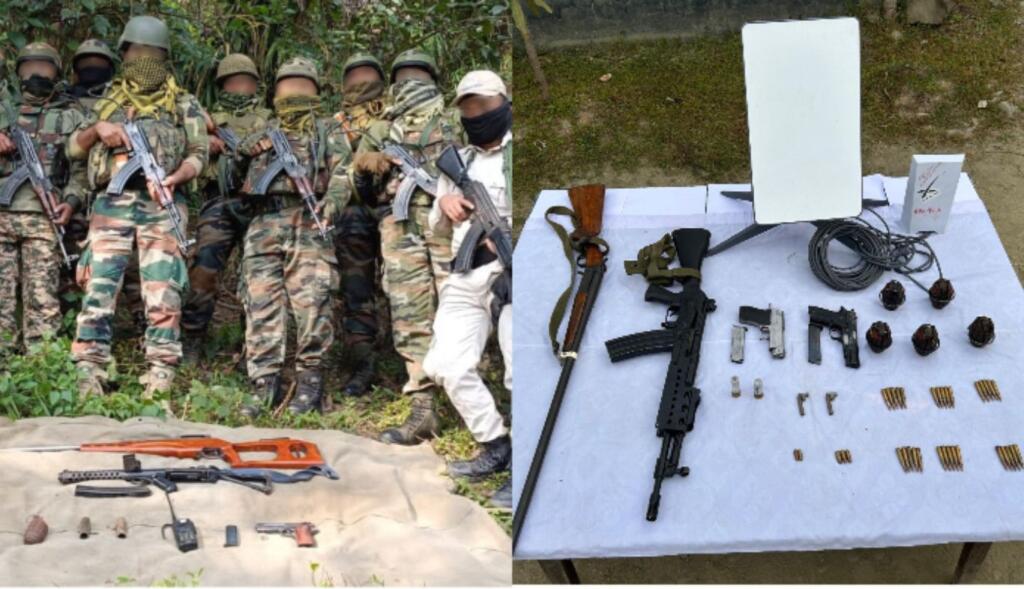In a shocking development, security forces in Manipur have found militants with a Starlink router and antenna along with other high-tech communication devices linked to global satellite internet services. The forces were conducting a combing operation in the Imphal district when they uncovered a cache of arms and ammunition, including grenades. The forces also seized a Starlink router and antenna, a product of Elon Musk’s SpaceX company, which is used to give uninterrupted global internet and communication access. The find raises major security concerns as the Starlink technology has already been flagged by many analysts as a very dangerous tech that can be used to destabilize entire regions.
The Manipur region has been rife with insurgency for the past few years. The Kuki groups are considered especially armed and have their own militant groups that have been targeting the local Meitei population. Authorities in Manipur had earlier issued a security alert following an intelligence report indicating that more than 900 Kuki militants had entered the state from Myanmar in September of this year. According to the reports, these terrorists received training in the use of projectiles, rockets, drone-based bombs, and jungle warfare.
However this is the first instance of Starlink equipment being recovered in the Manipur region, signaling the use of advanced communication technologies by rebel groups. Starlink, known for its capability to function from remote terrains, allows users to bypass traditional internet shutdowns, ensuring constant connectivity. This revelation highlights the sophistication of the militants communication networks despite the state government’s internet shutdown imposed during the ongoing conflict.
The seizure also included arms and ammunition of diverse international makes, believed to be sourced from the South Asian black market. Rebels in Manipur have reportedly been using high-tech weapons, including anti-drone guns, as evidenced by photographs circulated in the media. Experts suggest that such advanced weaponry and technology and their operations cannot be done by untrained groups acting on their own, this signifies high end backing from powerful lobbies in the region.
Political analysts had also flagged this development as indicative of a transnational conspiracy influencing the ongoing ethnic violence in Manipur. The presence of Starlink equipment, in particular, underscores the possibility of external support for armed groups, enhancing their operational capabilities despite state-imposed restrictions, said a source. The discovery also raises critical questions about the role of global technological systems like Starlink in conflict zones.
Starlink Device in Andaman Nicobar
In another alarming incident in November 2024, smugglers used a Starlink device in the largest-ever seizure of methamphetamine in India, valued at $4.2 billion, in the Andaman and Nicobar Islands. The Andaman and Nicobar Police recovered sophisticated satellite communication equipment and saved navigation coordinates from a Myanmarese vessel caught earlier this week with what officials called the largest-ever drug haul in the region – approximately 6,000kg of methamphetamine worth over ₹36,000 crore. Indian police had since issued a legal notice to Starlink, demanding details of the purchaser of the device used in the operation.
The boat, intercepted in a joint operation by the Crime and Economic Offence Police Station (C&EO) and the Indian Coast Guard (ICG) on Monday, had Starlink equipment and GPS waypoints saved for Rangat and Neil island. Starlink, operated by Elon Musk’s SpaceX, provides high-speed satellite internet access even in remote maritime locations, making it potentially valuable for coordinating illegal operations far from conventional communication networks.
Security Risks with Starlink
This growing trend highlights the security risks posed by unregulated satellite internet services. Starlink, along with Amazon Kuiper, is still awaiting approval from Indian authorities to officially launch its services in the country. Despite the ban, orbiting satellites continue to enable connectivity for illicit activities, including smuggling and cybercrime. The technology though not fully operational in India, but it is available in many countries worldwide, including several in South and Southeast Asia like Indonesia, the Philippines, and Sri Lanka. In India, Starlink is still in its beta testing phase and awaits regulatory approvals.
The Starlink system offers high-speed internet connectivity, even in remote areas where traditional infrastructure is unavailable. Its use for mobile telephony is emerging globally, but its adoption in India remains limited due to regulatory hurdles and high costs (approximately ₹7,000 monthly for subscription plus initial hardware costs). Neighboring countries also do not currently have widespread Starlink mobile telephony.
If there are reports of Starlink equipment being used in places like Manipur, it could suggest unauthorized or improvised usage of the technology, given its current limited availability in India. This also reasserts the fact that Starlink can be used as a tool to confront and counter the local, regional and national authorities.
Now Elon Musk is himself a part of the United States government under the President elect Donald Trump. This gives strong indications that the tech can be used by the US state to conduct operations on countries and meddle with their internal security. Starlink has played an important role in the current Russia-Ukraine conflict by providing an extremely crucial edge to the Ukrainian forces to target, locate and zero in on enemy forces. China and Russia have flagged these concerns many times before. Now it seems the India authorities too must pay heed to the vast array of dangers this technology can bring if given access in the country.
